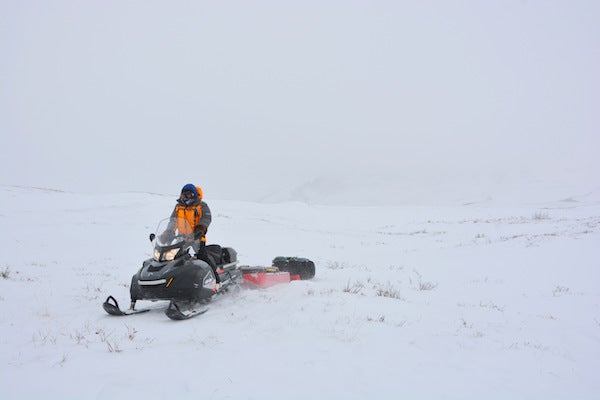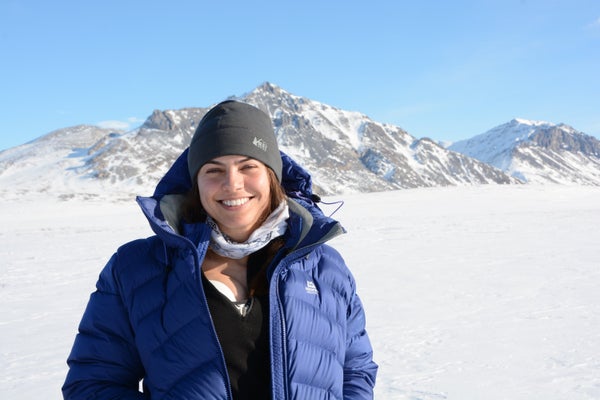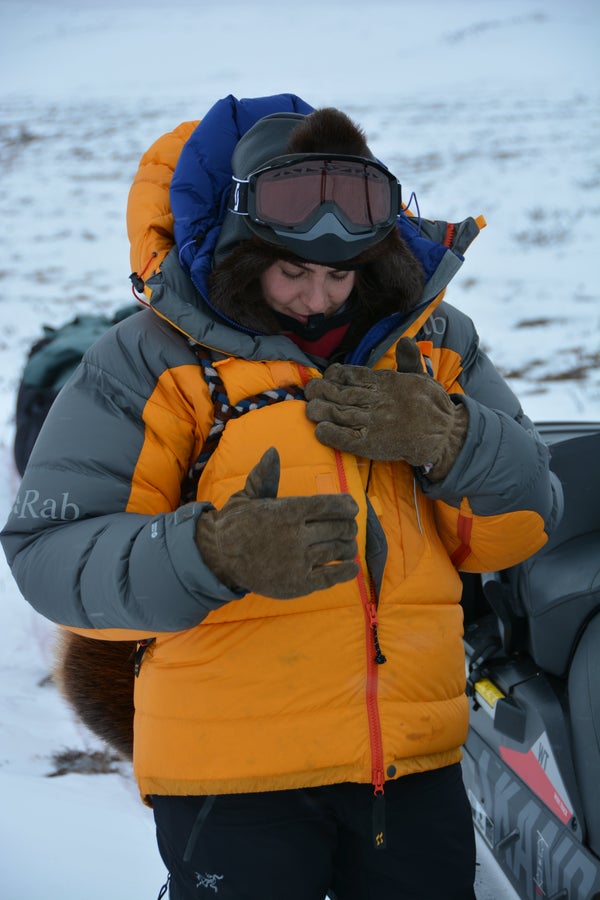This article was published in Scientific American’s former blog network and reflects the views of the author, not necessarily those of Scientific American
My first fear was that I’d freeze my ass off, but then it dawned on me that the risk might be far greater for my nipples. Did I really just sign up for a winter field expedition in Arctic Alaska as a new and lactating mother? The chance to traverse hundreds of miles of tundra on snowmobile, studying snow and caribou, was the opportunity of a lifetime for any wildlife biologist. But my excitement was quickly eroded by concern. What was I getting myself into?
For those without an intimate knowledge of breastfeeding, it’s a shockingly complex process—surprising considering it’s been a fundamental part of mammal life for millennia. Not only do you have to figure out how to successfully get your baby to latch on and pull milk out of your boob (again, much harder than it seems), but when you’re away from the little one, you need to keep extracting that milk, lest your supply drops or disappears entirely.
If you don’t do this often enough, or if the suction isn’t strong enough, you can get clogged ducts. At best, this means hard, painful lumps in your breasts and, at worst, results in mastitis (inflamed breast tissue sometimes requiring hospitalization). Fun, right?
On supporting science journalism
If you're enjoying this article, consider supporting our award-winning journalism by subscribing. By purchasing a subscription you are helping to ensure the future of impactful stories about the discoveries and ideas shaping our world today.
After a few months of mom life, I’d settled into my monotonous routine of hooking up to a traditional wall-plug breast pump while at work (picture a dairy cow milking machine—it’s pretty much the same thing). However, my normal system obviously wouldn’t fly while above the Arctic Circle with no electricity, experiencing wind-chill temperatures below –50 degrees Fahrenheit. My next thought was a manual pump.
But could I really endure 15 minutes of those conditions with my parka and shirt open and gloves off, cranking on my cheap, low-power hand pump? Not unless I really DID want to freeze. The only realistic option was something battery-powered that could operate independently inside my clothing while I worked. Amazingly, I did find one such system, a pump called Willow, but the cost was well beyond my means. How was I ever going to achieve this dream?
The idea of women participating in field science is one that I think most people can get behind. Who doesn’t want to see their mothers, sisters, daughters, wives and friends succeed in this arena alongside men? But I was beginning to worry that Arctic expeditions were simply off-limits to breastfeeding moms; maybe it just wasn’t possible to pump breast milk while also working and surviving in such extreme conditions.

The author on a snow machine. Credit: Kelly Elder
Many people told me I was brave, but I wondered if I was just being stupid. Maybe there’s a reason women don’t do this sort of thing very often. Maybe I should just stay home. These thoughts crossed my mind every day leading up to the expedition.
My successful participation in this campaign was only possible because of a wide-ranging support network. My husband and mother-in-law cared for my baby while I was gone for 11 days, bottle-feeding him from the over-three-gallon stash I had frozen prior to the expedition. My supervisor fought tooth and nail to use research project funds to purchase the only adequate breast pump on the market. Colorado State University ultimately approved the purchase, and the National Science Foundation provided the funds to buy the pump and thus ensure my safety during our research. My colleagues showed exceptional patience in the field, pausing as I pumped as many as seven times a day, often being chilled to the bone as they waited for me.
I’ve been home for almost three months now. During the expedition, I saw herds of over 200 caribou peppering the landscape. I was in awe over the dark, blocky forms of wild musk oxen on the horizon. I watched the northern lights dance, and I touched glasslike, bright blue walls of river ice. I pressed my nose against crystal-clear frozen lakes, gawking at the thousands of little bubble constellations trapped beneath the surface. I cried tears of utter amazement as I laid eyes on an area that we thereafter called the Throne Room of the Arctic Gods because it was so spiritually evocative.
And now that I’ve done these things, I know this opportunity has changed me, as a professional, a woman, and at a basic level, as a human being. These experiences shouldn’t be something that women miss out on because they’re mothers. But that fact is often countered by the many barriers women with children continue to face in reaching their career goals.
If we want to see women succeed in field science, we must encourage a culture that says “yes” rather than “no.” We must build a nation that takes pride in propping up its young female researchers and helping them realize success, despite the added complexities and challenges of doing so. I’m so grateful to find myself in such a culture (and to still have my nipples).

Pumping, hands-free, in relatively benign weather. Credit: Kelly Elder
